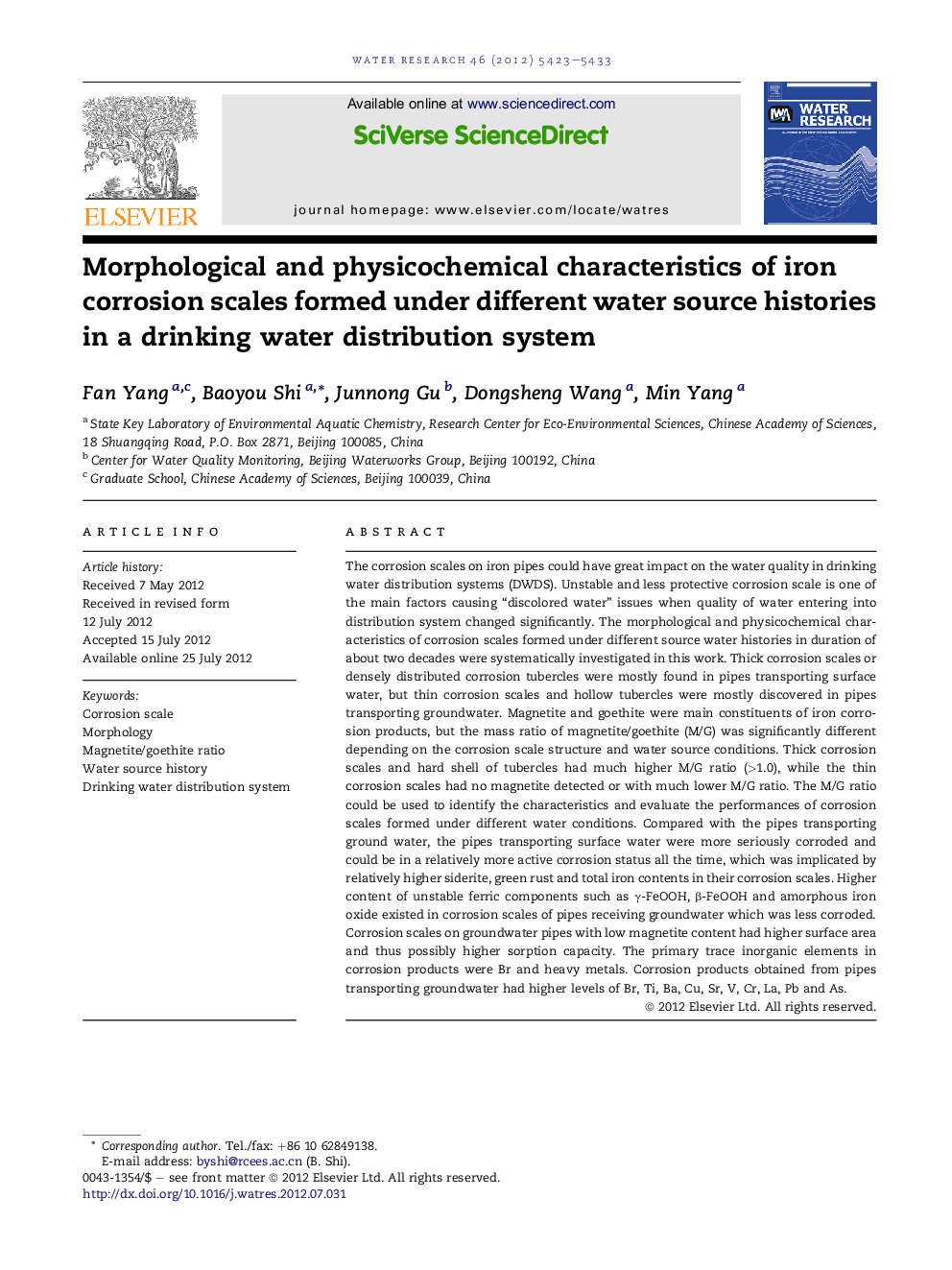| کد مقاله | کد نشریه | سال انتشار | مقاله انگلیسی | نسخه تمام متن |
|---|---|---|---|---|
| 4482768 | 1316868 | 2012 | 11 صفحه PDF | دانلود رایگان |

The corrosion scales on iron pipes could have great impact on the water quality in drinking water distribution systems (DWDS). Unstable and less protective corrosion scale is one of the main factors causing “discolored water” issues when quality of water entering into distribution system changed significantly. The morphological and physicochemical characteristics of corrosion scales formed under different source water histories in duration of about two decades were systematically investigated in this work. Thick corrosion scales or densely distributed corrosion tubercles were mostly found in pipes transporting surface water, but thin corrosion scales and hollow tubercles were mostly discovered in pipes transporting groundwater. Magnetite and goethite were main constituents of iron corrosion products, but the mass ratio of magnetite/goethite (M/G) was significantly different depending on the corrosion scale structure and water source conditions. Thick corrosion scales and hard shell of tubercles had much higher M/G ratio (>1.0), while the thin corrosion scales had no magnetite detected or with much lower M/G ratio. The M/G ratio could be used to identify the characteristics and evaluate the performances of corrosion scales formed under different water conditions. Compared with the pipes transporting ground water, the pipes transporting surface water were more seriously corroded and could be in a relatively more active corrosion status all the time, which was implicated by relatively higher siderite, green rust and total iron contents in their corrosion scales. Higher content of unstable ferric components such as γ-FeOOH, β-FeOOH and amorphous iron oxide existed in corrosion scales of pipes receiving groundwater which was less corroded. Corrosion scales on groundwater pipes with low magnetite content had higher surface area and thus possibly higher sorption capacity. The primary trace inorganic elements in corrosion products were Br and heavy metals. Corrosion products obtained from pipes transporting groundwater had higher levels of Br, Ti, Ba, Cu, Sr, V, Cr, La, Pb and As.
Figure optionsDownload high-quality image (181 K)Download as PowerPoint slideHighlights
► Iron corrosion scales with different water sources exhibited different morphologies.
► Pipes receiving surface water had typical four-layered tubercles or thick scales.
► Corrosion scale with ground water was thin, homogeneous, and chemically unstable.
► Magnetite and goethite ratio could be used to identify corrosion scales.
► The primary trace inorganic elements in scale samples were Br and heavy metals.
Journal: Water Research - Volume 46, Issue 16, 15 October 2012, Pages 5423–5433